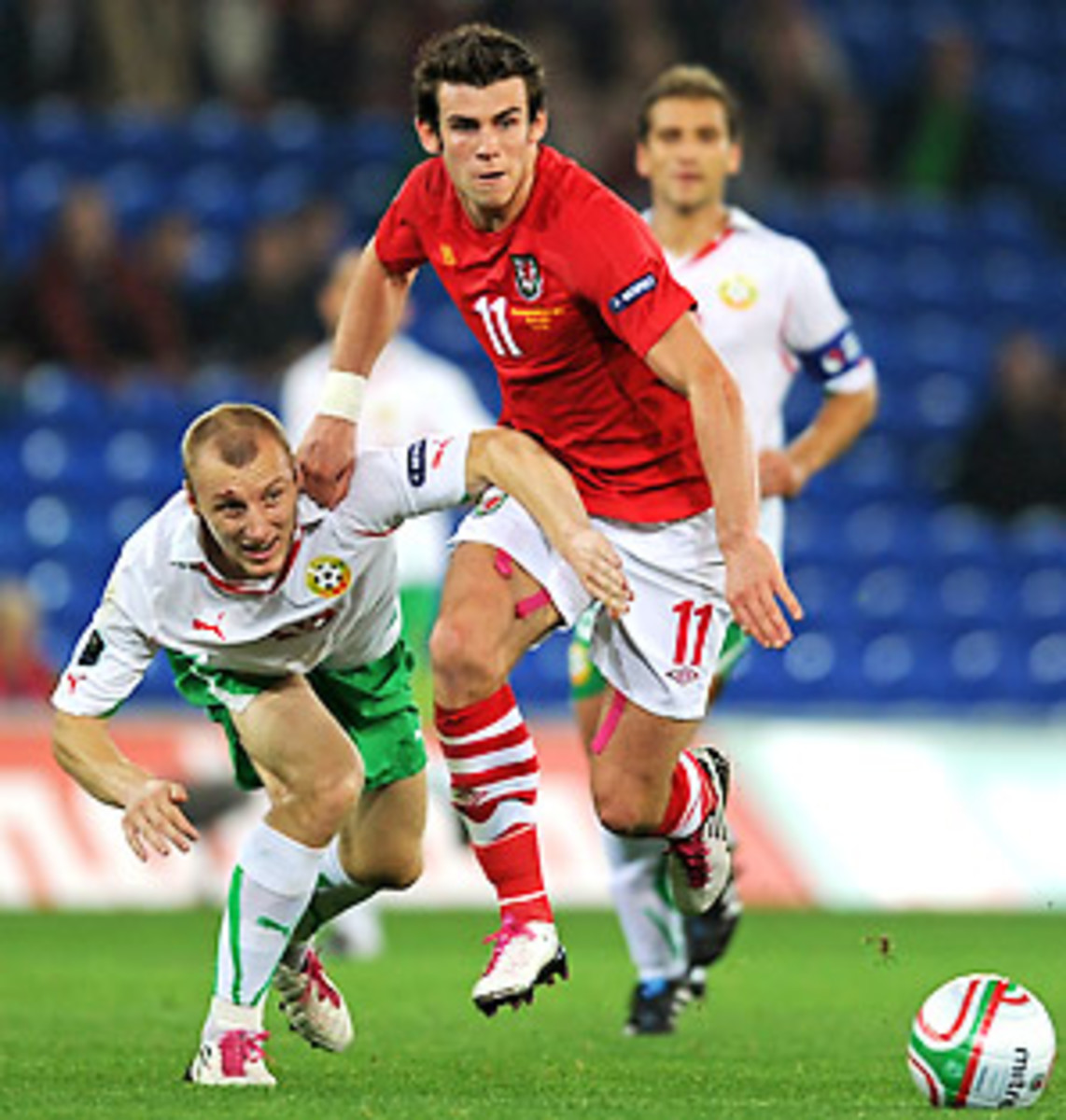
Wales' comeback bid takes a hit; standing debate gains momentum
Wales has lost 10 of its last 14 competitive matches, beating only Liechtenstein and Azerbaijan. Recent defeats to Montenegro, Bulgaria and Switzerland gave Wales its worst start to a qualifying campaign in more than 40 years. Despite that, there was a genuine feeling that Saturday's Euro 2012 qualifier against England would be a turning point thanks to Gary Speed's permanent appointment as manager and the threat Gareth Bale posed.
Now, as Speed and Tottenham manager Harry Redknapp debate precisely when the hamstring injury that will keep Bale out of the match occurred, Wales looks much less threatening. Bale is his nation's standout player, and no understudy has the same capacity for single-handedly changing a game. Moreover, Wales' game plan may suffer in Bale's absence.
Earlier this week, defender James Collins (who has been excellent for Aston Villa for much of this season) noted that Wales is a different proposition than when England last visited. "With the players we've got going forward, the likes of Gareth Bale and Craig Bellamy on the wings ... we've got to take the game to them," Collins said. "If you sit back, they'll punish you so we are certainly going to have a right go at them." When Bellamy talked about England's weaknesses, he was no doubt imagining Bale tormenting right back Glen Johnson.
Speed insists he won't change his approach due to the absence of one player. He is working on broader change in the Wales setup, and though his squad is predominantly drawn from the league below the Premier League (from which every England player has been selected), he has promising players at his disposal. Arsenal's Aaron Ramsey is back from injury and has been named captain, and Bellamy's speedy runs should keep Ashley Cole (England's best player of late) occupied.
For Fabio Capello, however, Bale's injury offers the opportunity to select a lineup designed to dictate play out wide rather than counter it. Had he been forced to deploy Manchester City's James Milner as Bale's minder, Capello would have had to forego more attacking options such as Aston Villa's Stewart Downing and Ashley Young and Spurs' Aaron Lennon. Wolves winger Matt Jarvis' slim chance of making his debut before Tuesday's friendly versus Ghana would have been nonexistent.
As it is, England can opt for pace and creativity on both wings. (A tantalizing combination: Pairing Wayne Rooney up front with Peter Crouch or Andy Carroll while staffing central midfield with Jack Wilshere and Scott Parker.)
Wales, meanwhile, is left hoping to simply put a dent in England's qualifying campaign.
On April 15, 1989, 96 people were killed and hundreds more injured in a crush at Sheffield Wednesday's stadium. As the anniversary of the Hillsborough disaster nears, the debate over safe standing has once again become more urgent.
In the wake of the tragedy, Lord Justice Taylor issued a report recommending that stadiums offer more seating for the sake of comfort, safety and crowd control. In 1994, all-seater stadiums became compulsory in the top tiers of English soccer. A little more than 10 years ago, then sports minister Kate Hoey proposed reintroducing standing areas to England's biggest stadiums. But the Hillsborough Family Support Group was horrified, and Hoey was effectively talked down. The idea hadn't gained meaningful support in government since.
Until this week. Current sports minister Hugh Robertson has said he will consider the case for safe standing areas. Though the HFSG, FA, FLA, Premier League and the police still oppose the idea, the weight of a Football Supporters' Federation campaign may give proponents some momentum.
The FSF's petition has already gained 8,000 signatures, and while that's a mere fraction of the roughly 500,000 who visit Premier League and Championship stadiums each week, readers will find this author's name among the signees. I doubt the petition will result in the return of standing terraces, but I support the FSF's continuing efforts to engage the authorities in genuine discussions on the subject. With Robertson on board, the FSF will tour the country with a model of the system used in Germany to create safe standing areas.
The standing debate has been filled with straw man arguments for too long; this week's discussion was notable for being one of the first that didn't cite Hillsborough as the main case against standing. The horrific memories of that day will never fade, and the footage will never get easier to view, but that shouldn't prevent legitimate discussion about how fans can safely stand.
The majority of soccer fans prefer to sit, but at any given match groups of supporters choose to ignore regulations to stand throughout the game. It's almost impossible to prevent, unless a club is willing to remove swaths of its most vocal supporters. Though FLA figures show there were very few injuries at all-seater stadiums last season, standing in rows of seats as opposed to in designated standing areas (like those incorporated into Bundesliga stadiums) surely poses some risks.
Representing the Association of Chief Police Officers at this week's meeting, Andy Holt suggested that safe-standing areas would "reward football supporters for breaking the rules." That's exactly the kind of argument I signed my name against. Professional soccer depends on its supporters, and their wishes shouldn't be ignored. That's even more true at a time when the average attendance in the Premier League and Championships is at 78 percent. Some fans want to be able to stand, and many of those who prefer to sit support the right to choose.
The German model is well designed, well implemented and well liked. Hopefully the lesson won't be lost in translation.





